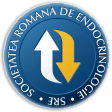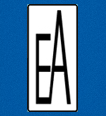
- Login
- Register
- Home/Current Issue
- About the journal
- Editorial board
- Online submission
- Instructions for authors
- Subscriptions
- Foundation Acta Endocrinologica
- Archive
- Contact
 Romanian Academy
Romanian Academy
 The Publishing House of the Romanian Academy
The Publishing House of the Romanian Academy

ACTA ENDOCRINOLOGICA (BUC)
The International Journal of Romanian Society of Endocrinology / Registered in 1938in Web of Science Master Journal List
Acta Endocrinologica(Bucharest) is live in PubMed Central
Journal Impact Factor - click here.

Showing 1 - 2 of 2
-
Endocrine Care
Danis N, Comlekci A, Yener S, Durak M, Calan M, Solmaz D, Yalcin MM, Gulcu A, Demir T, Bayraktar F, Canda T
Association between Hashimoto’s Thyroiditis and Papillary Thyroid Cancer: a Single Center ExperienceActa Endo (Buc) 2022 18(1): 74-78 doi: 10.4183/aeb.2022.74
AbstractPurpose. To investigate the association between papillary thyroid cancer (PTC) and Hashimoto’s thyroiditis (HT). Design. This study is a retrospective study that conducted during 7 consecutive years with a median 119.5 months follow-up. Subjects and Method. Patients who underwent thyroidectomy in Dokuz Eylül University Hospital during 7 consecutive years were included. Patients’ demographics, biochemical, radiological, and pathological results were retrospectively assessed. Results. Four hundred sixty nine patients were evaluated. Among 469 patients who underwent thyroidectomy, 132 (28.1%) were malignant, while 182 patients were diagnosed with HT (38.8%). PTC was ranked first at 92.4% (n: 122). The prevalence of HT was 54.9% in patients with PTC and 33.1% in patients without PTC diagnosis (p<0.001). Younger age and the presence of HT were independently associated with PTC. The presence of HT was associated with increased risk of development of PTC (OR: 2.2, %95 CI: 1.4-3.5, p<0.001) but not with TNM stage or recurrence. Lymph node metastasis at presentation was the strongest predictor of recurrence (OR: 13.9, CI: 3.5-54.6, p<0.001) Conclusions. HT was an independent risk factor for development of PTC. According to our findings, HT patients (particularly with nodular HT) should be observed carefully and thyroid fine needle aspiration biopsy (TFNAB) should be encouraged if necessary. -
General Endocrinology
Yaman Kalender DS, Mehmet Calan, Secil Ozisik, Dilek Cimrin, Bayraktar F
Optimizing Diagnostic Accuracy in Cushing Syndrome Using 1 Mg Dexamethasone Suppression Test Cut-OffsActa Endo (Buc) 2024 20(4): 422-429 doi: 10.4183/aeb.2024.422
AbstractIntroduction. Diagnosing Cushing Syndrome (CS) remains challenging due to its diverse symptoms and the complexity of its subtypes. This study aimed to optimize diagnostic cut-off values for differentiating CS subtypes using the 1 mg dexamethasone suppression test (DST) in a cohort of 237 patients. Materials and Methods. Retrospective data from patients diagnosed with non-functional adrenal adenomas (NFA), mild autonomous cortisol secretion (MACS), adrenal CS, and pituitary CS at the Dokuz Eylül University Endocrinology and Metabolism Clinic (2005–2016) were analyzed. Sensitivity and specificity of morning cortisol levels after DST were evaluated using receiver operating characteristic (ROC) curve analysis. Results. The analysis identified optimal morning cortisol cut-off levels: 2.14 μg/dL (59.04 nmol/L) for MACS, 2.3 μg/dL (63.4 nmol/L) for adrenal CS, and 2.33 μg/dL (64.28 nmol/L) for pituitary CS. Conclusion. These optimized thresholds demonstrated high sensitivity and specificity, significantly improving diagnostic precision over the conventional threshold of 1.8 μg/dL (50 nmol/L). The findings underscore the importance of tailored cut-off values to address subtype-specific diagnostic challenges, reducing delays and mitigating long-term complications. Personalized diagnostic approaches, incorporating patient demographics and disease-specific characteristics, are essential for enhancing diagnostic accuracy and facilitating timely interventions.
Showing 1 - 2 of 2